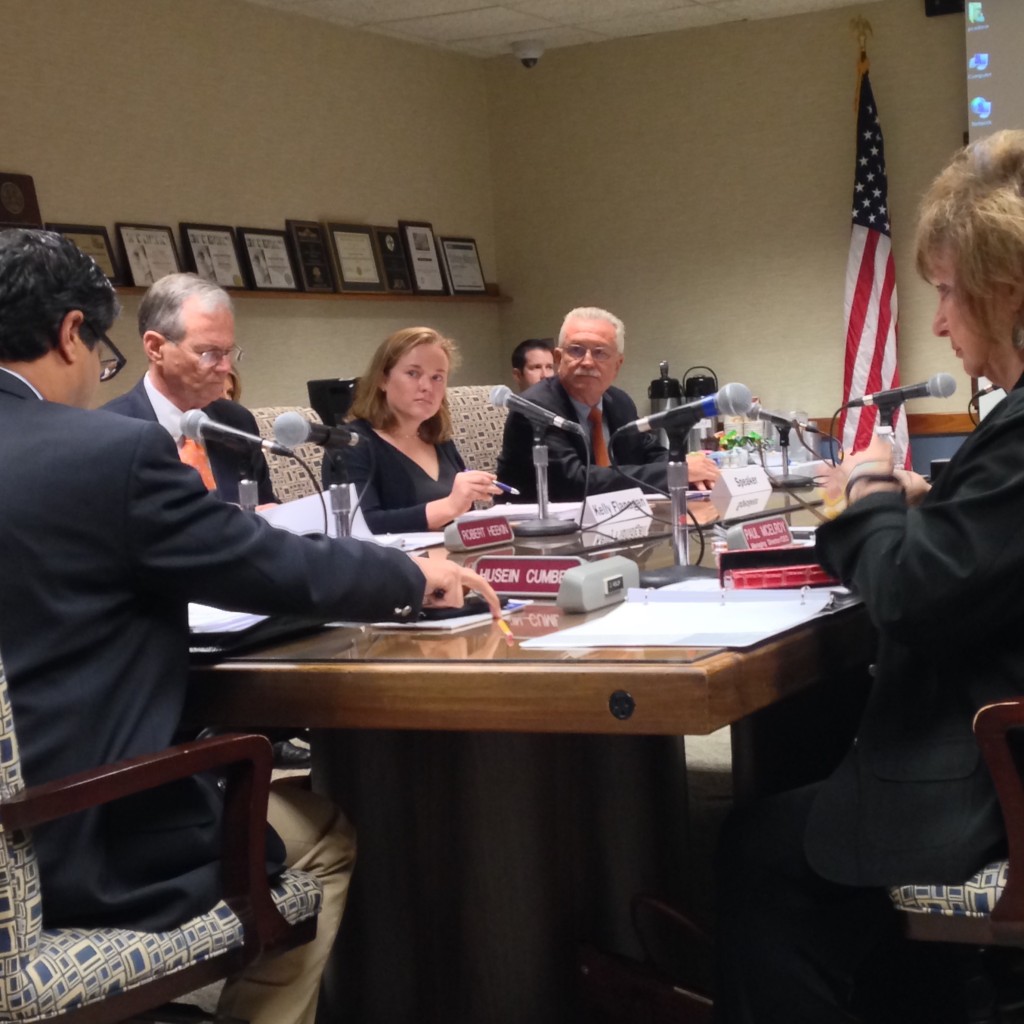
The Friday meeting of the JEA Board meeting started off with “unusual circumstances.”
Because of various removals and resignations of board members, there weren’t actual officers.
With that in mind, a chair pro tempore had to be elected, and into that void emerged Husein Cumber, one of the few holdovers left on a board that welcomed Tom Petway and Delores Kesler as members in this October meeting.
Regrettably, City Council liaison Bill Gulliford was not on hand; present from the mayor’s office, however, was Johnny Gaffney, the former councilman who is liaison to, give or take, 60 boards.
“The mayor’s a truly compassionate individual,” Gaffney said unexpectedly in his introductory remarks.
There were few pyrotechnics at this board meeting. A lot of discussion of economics and how the board would frame JEA ahead of the crucial December meetings with bond ratings agencies.
Melissa Dykes, chief financial officer for the utility, said the balance sheet was “extremely challenged” with a “credit to debt ration significantly higher than peers with a AA rating.”
That said, “in the last year, JEA has paid down $430 million in debt.”
At its peak in 2010, the utility bore the burden of $6.4 billion in debt; the number is now below $4.9 billion, proof that it’s “moving in the right direction” and “making good progress” toward a “healthy balance sheet,” just in time to “tackle environmental challenges” on the horizon.
Among those challenges, presumably: JEA’s decision to invest in a coal-fired power plant, anathema to current federal policy.
Long-term financial assumptions, meanwhile, tell an interesting story.
In 2035, sales of electricity nationwide will be below 2013, which is “pretty bleak,” and runs opposite of historic trends, according to CFO Dykes.
“The industry grew 3 to 4 percent for 100 years,” said Dykes, but the “next five years” are projected to be “flat with no growth at all.”
Meanwhile, because of lower interest rates, yield on investments hover below 1 percent … which again is not optimal.
Beyond that, though, JEA is in a position to make a strong case for its financial solvency.
On the electric side, it has 182 days of cash, and 303 days of liquidity. The revenue growth in sewer and water: 4.7 percent. This and other related metrics, said Dykes, tell a “really good story.”
“When it comes to numbers, we’ve really delivered,” Dykes said.
Though a lot of the liquidity goes to debt service.
CEO Paul McElroy extolled the organization’s performance goals, saying that “we’ve come a very long way in a very short period of time.”
However, “we’ve got to get costs lower” as customer demand declines.
One would expect, given the mayor’s office’s desire to have a board that jibes with its vision, that board members would be interested in making that play. And Chair Pro Temp Cumber did not disappoint, expressing concerns that the numbers, upon which performance incentives are based, might be “aspirational.”
McElroy countered that “no performance [bonus] is paid if the budget is not achieved.”
Cumber stepped up soon thereafter to address the “elephant in the room,” the utility’s contribution to the JEA Agreement.
No satisfactory resolution was made on that point, don’t worry.
Cumber also addressed rate breaks for economic development purposes, related to business recruitment, asking the question bluntly: “Do we have options?”
Of course, a chair pro tempore doesn’t exactly instill confidence in ratings agencies, and to that end, there was discussion as to how to “give the ratings board more assurance” by electing officers.
New member Delores Kesler observed that “you hate to establish something with four members,” yet “we should do it at the next meeting,” where in theory there will be at least five (Kelly Flanagan, a mayoral appointee, awaits confirmation by council).
Whatever the case, this board is one to watch.
McElroy played his cards close to the vest, saying that “we look forward to being held accountable” to “expectations the board has of us.”
Cumber spoke of another elephant in the room (it was a crowded room): specifically, the “big transition that took place” which led to “five board members who are not here” and “needed to [be] recognized.”
It will be interesting to see if any other “board members … are not here” at the November conclave.



